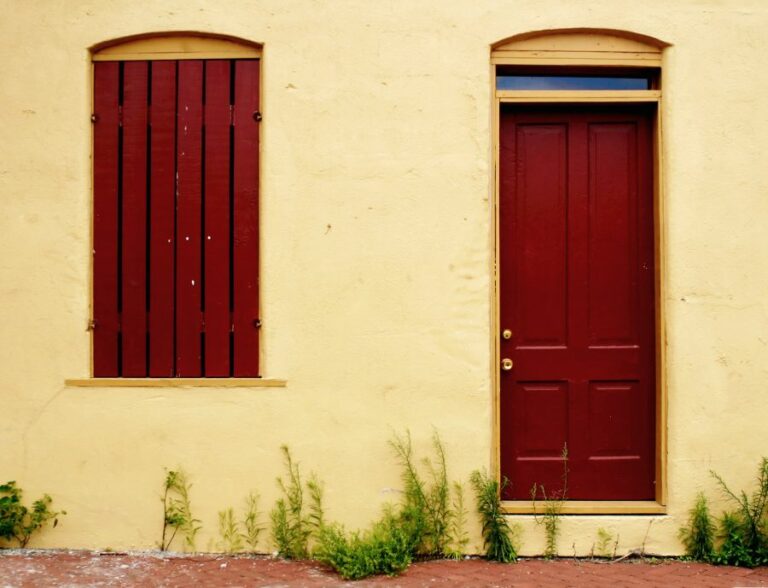Concrete Paint Outdoor Steps
Tired of your outdoor steps looking dull and worn? Transform their appearance with our ultimate guide to concrete paint outdoor steps! Let’s explore the easy DIY techniques, top paint and sealant selections, and important upkeep insights. Say goodbye to cracked and lifeless surfaces; let us elevate your home’s aesthetic today.
Concrete paint outdoor steps:
Concrete paint is a perfect solution to refresh the look of outdoor concrete steps and protect them from the elements. Choosing the right paint, such as acrylic latex or epoxy paint, is crucial for durability and a long-lasting finish. Properly preparing the surface with cleaning, repairing, etching, and priming ensures smooth, professional-looking results. Use high-quality synthetic brushes or paint rollers for even coverage, and apply at least two coats. Once done, maintain your freshly painted steps by regularly removing debris, cleaning stains promptly, and avoiding harsh chemicals or abrasives. Reapply paint as needed to maintain your steps’ appearance and protection.

Discover effective techniques to enhance the durability and appearance of your outdoor steps with concrete paint. Learn about proper surface preparation, application methods, and maintenance tips to achieve long-lasting, slip-resistant, and visually appealing stairs.
Contents
- 1 Durable Concrete Paint for Outdoor Steps
- 2 What Type of Paint Should You Utilize for Exterior Concrete Staircases?
- 3 Is Painting Outdoor Concrete a Beneficial and Practical Option?
- 4 Is it necessary to apply primer on concrete stairs prior to painting?
- 5 Is it Possible to Apply White Paint on Concrete Steps?
Durable Concrete Paint for Outdoor Steps
Concrete steps, whether they’re leading up to your front door or adding charm to your backyard patio, are known for their durability and long-lasting nature. However, they can eventually show signs of wear and become unattractive.
Concrete paint is the perfect solution to give your outdoor steps a fresh look and protect them from the elements. This comprehensive guide will walk you through step by step how to paint your outdoor concrete steps like a pro.
• Choosing the Right Paint for Outdoor Concrete Steps
The process’s first step is choosing the right paint for your outdoor concrete steps. This is a crucial decision, as the type of paint you choose will significantly impact the final outcome and the durability of the paint job.
– Acrylic Latex Paint
I recommend acrylic latex paint for outdoor concrete steps. This paint is specifically formulated for masonry surfaces and provides a durable, long-lasting finish.
Moreover, it is UV resistant, which means it won’t fade under sunlight, and it possesses excellent water-resistant properties, ensuring that the paint job lasts for an extended period.
– Epoxy Paint
Another excellent option is epoxy paint. This paint is known for its unmatched durability on concrete surfaces, making it ideal for outdoor steps that endure foot traffic and environmental exposure.
Moreover, epoxy paint is resistant to water and chemicals, ensuring that your outdoor steps will be protected against all potential damage.
• Preparing Your Outdoor Concrete Steps for Painting
Before applying paint to your outdoor concrete steps, it’s essential to prepare the surface properly. Proper surface preparation will ensure that the paint adheres well and that the final result is smooth and professional-looking.
– Cleaning the Steps
Begin with thoroughly cleaning your outdoor concrete steps to remove dirt, grease, and debris. This can be done using a scrub brush, water, and a mild detergent or concrete cleaner.
You may need to use a pressure washer for stubborn stains or algae. Let the steps dry completely before proceeding to the next step.
– Repairing Damaged Areas
Inspect the steps for any cracks, chips, or uneven areas. Use a concrete repair product to fill any cracks, and allow it to dry according to the manufacturer’s instructions. Sand down any rough spots to create a smooth surface.
– Etching the Surface
Etching the surface is a crucial step, as it will allow the paint to adhere securely to the concrete. An etching solution, available at most home improvement stores, is used to etch the surface.
Follow the manufacturer’s instructions to apply the etching solution to your steps, and rinse off the residue afterward.
– Priming the Steps
To ensure proper adhesion and a smooth finish, apply a coat of concrete primer. This step will also help to seal the concrete and provide additional protection. Let the primer dry completely before moving on to the next step.
• Painting Your Outdoor Concrete Steps
Now that the surface is clean, repaired, etched, and primed, it’s time to paint your outdoor concrete steps. To achieve a flawless finish, follow these steps:
– Stirring the Paint
Prior to applying paint, stir the contents well to ensure even color and consistency. You may also want to pour the paint into a paint tray for easier application.
– Using the Right Tools
I recommend using a high-quality synthetic brush or a paint roller with a medium-to-long nap cover for painting your outdoor concrete steps. These tools will help ensure even coverage and a smooth finish.
– Applying the First Coat
Begin by painting the edges and corners of the steps using the brush, being sure to cut in neatly. Follow this by painting the large, flat surfaces with the roller. Always maintain a wet edge to prevent lap marks and brush strokes.
One coat might be enough, depending on your chosen product and the color you want to achieve. However, I recommend applying at least two coats for a perfect result. Allow the first coat to dry according to the manufacturer’s instructions before applying the second coat.
• Caring for Your Painted Outdoor Concrete Steps
Once the paint job is completed, caring for your outdoor concrete steps is essential to ensure they look great and last for many years. Here are some tips for maintaining your freshly painted steps:
- Sweep or blow off debris regularly to prevent stains and wear.
- Clean any spills or stains promptly to avoid permanent damage.
- Avoid using harsh chemicals or abrasive cleaning tools on your painted steps.
- Apply a fresh coat of paint every few years or as needed to maintain the appearance and protection of your steps.
By following these guidelines, you’ll be able to transform your worn and unattractive outdoor concrete steps into a beautiful and durable asset, enhancing the overall appeal of your home’s exterior.
Take your time in choosing the right paint, preparing the surface, and painting with precision, and you’ll be left with professional-looking results that you can be proud of.
What Type of Paint Should You Utilize for Exterior Concrete Staircases?
Exterior concrete steps are an important part of many homes and commercial buildings. They provide accessibility, safety, and visual appeal to the building’s overall design. To maintain their appearance and durability, choosing the right paint for these steps is essential.
• Factors to Consider When Choosing Paint for Outdoor Concrete Stairs
Before diving into specific paint options, you need to think about certain factors that will influence your decision. These factors play a crucial role in determining the effectiveness and longevity of the paint job.
– Climate Conditions
The climate in your area is an important factor when considering paint for exterior concrete steps. Choose a paint that is designed to withstand the specific climate and weather conditions you experience, whether it be high humidity, heavy rainfall, direct sunlight, or extreme temperature fluctuations.
– Surface Preparation
Any paint job will last longer and look better if the surface is properly prepared. Make sure the concrete steps are clean, free of dirt, oil, and old paint before applying any paint. Patch cracks, holes, or uneven surfaces with a suitable concrete filler.
– Primer
Using a primer is essential when painting exterior concrete steps. A primer will help the paint adhere better and create a stable base that will last longer. Choose a primer specifically designed for use on concrete and compatible with your choice of paint.
– Durability
Your exterior concrete steps see great foot traffic and are exposed to various elements. Look for durable, high-quality paint that resists fading, peeling, and cracking.
– Slip-Resistance
Safety is paramount when it comes to exterior steps. Opting for a paint that incorporates a slip-resistant additive or texture will improve traction and reduce the risk of accidents.
• Types of Paint Suitable for Exterior Concrete Steps
Several types of paint work well on concrete steps. The right one for your project will depend on your specific needs and preferences. Here are some popular choices:
– Masonry Paint
Masonry paint is designed specifically for use on concrete, bricks, and other porous surfaces. It is highly durable and resistant to harsh weather conditions, making it an excellent choice for outdoor concrete steps. This type of paint is typically water-based, making it easy to apply and clean up.
I recommend using masonry paint for its durability and compatibility with concrete surfaces.
– Epoxy Paint
Epoxy paint is a fantastic option for concrete steps due to its extreme durability and resistance to chemicals, water, and abrasion. These paints are typically two-part mixtures that require careful preparation and application. Epoxy paint is a great choice if you’re looking for a long-lasting, low-maintenance finish.
From my experience, I would suggest using epoxy paint for high-traffic areas or commercial settings, as it can withstand regular wear and tear.
– Acrylic Latex Paint
Acrylic latex paint is a popular choice for exterior concrete steps due to its durability, ease of use, and low maintenance. This type of paint is water-based, making it easy to clean up and environmentally friendly.
Additionally, acrylic latex paint provides excellent adhesion to concrete surfaces, ensuring a long-lasting finish.
Acrylic latex paint would be my go-to choice for residential projects, as it is practical, easy to apply, and provides a durable finish.
– Concrete Stain
While not a paint, concrete stain is another option for exterior steps. It penetrates the surface, providing a durable, long-lasting finish that requires little maintenance. Concrete stains are available in a wide range of colors and can enhance your steps’ natural texture and appearance.
From my perspective, concrete stain is suitable for those seeking a more natural finish that complements their home’s exterior design.
• Tips for a Successful Exterior Concrete Steps Paint Project
Here are some pointers to help ensure a successful outcome when painting your exterior concrete steps:
- Properly prepare the surface: Ensure the steps are completely clean, dry, and free of any grime or dust before beginning. Additionally, repair any cracks or holes with a concrete filler.
- Use a primer: Applying a quality primer will enhance the paint’s adhesion to the concrete surface, resulting in a longer-lasting finish.
- Apply the paint in thin, even layers: Applying too thick a layer of paint can result in an uneven finish and a greater likelihood of peeling. Apply at least two thin coats, allowing ample drying time between each layer.
- Opt for a slip-resistant finish: Prioritize safety by selecting a paint that includes a non-slip additive or applying a non-slip coating after the paint has dried.
- Regularly maintain your steps: Periodically inspect your concrete steps for any signs of wear or damage, and address these issues promptly to maintain their appearance and durability.
In conclusion, choosing the right paint for your exterior concrete steps involves considering factors such as climate conditions, surface preparation, and desired finish.
Look for high-quality products, such as masonry, epoxy, or acrylic latex, that offer durability and compatibility with your concrete surface. Moreover, don’t forget to incorporate slip resistance into your choice to ensure safety.
By carefully considering these factors and following the tips outlined in this guide, your exterior concrete steps will maintain their appearance, safety, and durability for years to come.
Type of Paint | Description |
|---|---|
Masonry Paint | Masonry paint is specifically designed for exterior concrete and masonry surfaces. It is water-resistant and long-lasting. |
Acrylic Latex Paint | Acrylic latex paint is a versatile option that adheres well to concrete surfaces and provides excellent coverage with easy cleanup. |
Epoxy Paint | Epoxy paint is durable and provides a strong coating for concrete steps, making it resistant to stains, chemicals, and wear. |
Concrete Stain | Concrete stain penetrates the surface to create a long-lasting color that won’t peel or flake like paint. It provides a natural, mottled look for concrete steps. |
Is Painting Outdoor Concrete a Beneficial and Practical Option?
Painting outdoor concrete surfaces can be a great way to improve the appearance and extend the life of the concrete. However, there are several factors to consider before deciding if it’s a good idea to paint your outdoor concrete.
• Advantages of Painting Outdoor Concrete
– Enhanced Aesthetics
The most obvious advantage of painting outdoor concrete is the aesthetic improvement. Concrete can be dull and unattractive, but a fresh coat of paint can instantly transform it into a colorful and visually appealing surface.
You can choose from countless colors and designs to create an appealing and welcoming environment.
– Increased Durability
When properly applied, high-quality paint can provide a protective barrier against the elements, helping to increase the lifespan of your concrete. This can be particularly beneficial in regions with harsh weather conditions, such as extreme heat, cold, or moisture.
– Reduced Maintenance
Concrete surfaces can be prone to stains, mold, and mildew growth, making regular cleaning and maintenance necessary. A well-applied, high-quality paint can help reduce the amount of maintenance required to keep your outdoor concrete surfaces looking their best.
– Safety Improvements
Paint can help improve traction and reduce slipperiness on outdoor concrete surfaces, reducing the risk of slips and falls. This can be especially important in areas with heavy foot traffic or frequent exposure to wet conditions.
• Disadvantages of Painting Outdoor Concrete
– Preparation and Application Challenges
Preparing and painting outdoor concrete surfaces can be a time-consuming and labor-intensive process. Depending on the area’s size and the concrete’s condition, it may require extensive cleaning, repair, and priming before painting can begin.
Applying paint evenly and consistently can also be challenging, especially for larger surfaces or surfaces with intricate details.
– Potential Damage to the Concrete
If the paint is not applied correctly or maintained adequately, it may eventually cause damage to the concrete surface.
This risk is particularly elevated in situations where the concrete is exposed to freeze/thaw cycles, causing the paint to crack and allowing water to infiltrate the substrate, leading to potential structural damage.
– Limited Lifespan
Although high-quality paint can help prolong the life of your outdoor concrete, paint generally has a limited lifespan and will require regular maintenance and repainting. This can be a disadvantage if you are looking for a low-maintenance and long-lasting solution for your outdoor concrete surfaces.
– Environmental Impact
Painting your outdoor concrete can also have negative environmental impacts. Some types of paint contain volatile organic compounds (VOCs), which can contribute to air pollution and harm environmental and human health.
Additionally, improperly disposing of leftover paint can introduce harmful chemicals into the environment.
• Recommendations for Painting Outdoor Concrete
– Choose the Right Paint
When painting outdoor concrete, choosing a paint specifically designed for this purpose is crucial. Look for “concrete paint” or “masonry paint” products that offer UV resistance, are waterproof, and provide a durable finish.
This will ensure your paint job lasts as long as possible and provides the protection your concrete needs.
– Properly Prepare the Surface
To achieve the best results when painting outdoor concrete, it’s essential to prepare the surface beforehand thoroughly. This includes cleaning, repairing any cracks or defects, and using a high-quality primer.
Proper surface preparation will help ensure a smooth and even paint application and promote strong paint adhesion.
– Mind the Weather
Ideally, paint outdoor concrete on a day with mild temperatures, low humidity, and no rain in the forecast. These conditions will help the paint dry properly and provide the best possible finish.
– Hire a Professional
If you’re unsure about your ability to prepare and paint your outdoor concrete surface properly or if you would like to save time and effort, consider hiring a professional.
A skilled and experienced contractor can ensure that your outdoor concrete is correctly prepared and painted, providing the best possible results.
– Maintain Your Painted Surface
Once your outdoor concrete is painted, regular maintenance is required to keep it looking its best and ensure the paint remains protective. Clean your painted surfaces as needed with soap and water, and reapply paint as necessary to maintain an even and well-protected finish.
• Conclusion
Is it a good idea to paint outdoor concrete? Considering the potential benefits and drawbacks, there is no one-size-fits-all answer. Painting outdoor concrete surfaces can provide a range of benefits, including enhanced aesthetics, increased durability, and reduced maintenance requirements.
However, weighing these advantages against the challenges of surface preparation, application, and ongoing maintenance is important. Ultimately, the decision to paint your outdoor concrete surfaces depends on your specific circumstances and preferences.
By following the recommendations provided in this article, you can ensure the best possible outcome for your outdoor concrete painting project.
Is it necessary to apply primer on concrete stairs prior to painting?
Over time, concrete steps can begin to show signs of wear and tear, prompting the decision to paint them for a fresh look. But do you need to prime concrete steps before painting? The simple answer is yes.
Painting concrete steps without priming can result in poor adhesion, causing the paint to peel, crack, or chip away from the surface.
• Importance of Priming Concrete Steps
Just like with any painting project, proper preparation is essential when it comes to painting concrete steps. Priming is a crucial step in the process and should not be ignored. Here are some of the reasons why it is essential:
1. Enhanced Adhesion
Priming creates a suitable surface for the paint to adhere to, ensuring a strong bond between the paint and the concrete. This is especially important for exterior steps prone to weather elements and heavy foot traffic. Priming prevents premature chipping, peeling, or flaking of the paint.
2. Reduced Efflorescence
Efflorescence is the formation of white, powdery deposits on the surface of the concrete. It occurs when soluble salts in the concrete react with moisture, migrating to the surface and causing discoloration. Priming helps to seal the surface, reducing the chances of efflorescence.
3. Uniform Appearance
A concrete primer evens out the surface, filling in any small holes, cracks, or imperfections that could affect the final paint job’s appearance. This creates a smooth and consistent base for the paint, helping to achieve a uniform finish.
• Types of Concrete Primers
There are several types of concrete primers available in the market. Choosing the right primer for your concrete steps is essential for the best results. Here are some of the most common concrete primers:
1. Concrete Bonding Primer
A concrete bonding primer is designed to provide excellent adhesion between the concrete surface and the paint. It creates a strong bond between the two materials, ensuring long-lasting results. This type of primer is compatible with a wide range of paints, including latex, oil-based, and epoxy paints.
2. Acrylic Concrete Primer
Acrylic concrete primers are water-based, making them easy to clean up and environmentally friendly. They are suitable for both interior and exterior concrete surfaces and provide good adhesion and penetration. This type of primer is typically used with latex or acrylic paints.
3. Epoxy Primer
Epoxy primers provide a durable and resilient finish, making them ideal for high-traffic areas or exterior concrete steps exposed to harsh weather conditions. These primers offer excellent adhesion and protection against moisture, chemicals, and abrasion.
They are typically used with epoxy or urethane paints.
• How to Prime and Paint Concrete Steps
Follow these steps to ensure the successful priming and painting of your concrete steps:
1. Clean the Surface
It’s essential to start with a clean surface when painting concrete steps. Remove any dirt, debris, or loose paint with a broom or a vacuum. Use a pressure washer or a scrub brush and a mild detergent for stubborn stains. Allow the steps to dry thoroughly before proceeding.
2. Repair Damages
Inspect the concrete steps for any cracks, holes, or other damages. A concrete patching compound fills these imperfections, smoothing the surface with a trowel. Allow the patching compound to dry according to the manufacturer’s instructions.
3. Apply Primer
Choose the appropriate primer for your concrete steps based on the recommendations above. Apply the primer with a brush or roller, ensuring full and even coverage. Let the primer dry according to the manufacturer’s instructions.
4. Paint the Steps
Select the appropriate paint for your concrete steps. Typically, acrylic or latex-based paints are recommended, as they provide good adhesion, durability, and resistance to weather conditions.
Apply the first coat of paint using a brush or roller, ensuring even coverage. Allow the paint to dry according to the instructions on the paint can. Apply a second coat for optimal coverage, allowing it to dry as well.
5. Seal the Painted Steps (Optional)
If desired, apply a concrete sealer over the painted steps to provide additional protection against moisture, stains, and other damages. Follow the manufacturer’s recommendations for the application and drying time.
• Conclusion
Priming your concrete steps before painting is critical to ensure a long-lasting, durable, and visually appealing finish.
By choosing the right primer and following the correct preparation steps, you’ll achieve professional results that will enhance the appearance and maintain the condition of your concrete steps.
Is it Possible to Apply White Paint on Concrete Steps?
Painting concrete steps white is possible and an excellent way to enhance the appearance of your stairs, improve safety, and protect the concrete itself. This guide covers the necessary steps to achieve a professional, long-lasting finish on your concrete stairs.
• Benefits of Painting Concrete Steps White
Before diving into the process, let’s discuss some significant advantages that come with painting concrete steps white.
– Aesthetic Appeal
White is a timeless and versatile color that can complement various architectural styles and create a clean, fresh look for your exterior stairs.
– Increased Safety
Painting your concrete steps white can increase the visibility of each step, especially in low-light conditions, reducing the risk of trips and falls.
– Protection
Applying high-quality paint designed for concrete surfaces can protect your stairs from everyday wear and tear and harsh weather conditions, extending their lifespan.
– Resale Value
A well-maintained and visually appealing set of stairs can positively impact the resale value of your property.
• Choosing the Right Paint
When painting concrete steps, selecting a paint explicitly designed for concrete surfaces is critical. Otherwise, you may face problems, such as premature paint chipping or peeling away. Here are some recommendations for suitable concrete paints:
– Epoxy-based Paints
Epoxy paints are durable, long-lasting, and resistant to stains, chemicals, and water. They consist of a base (epoxy resin) and a curing agent, forming a strong bond with the concrete surface.
– Acrylic Latex Paints
Acrylic latex paints are suitable for concrete steps due to their high level of breathability, enabling water and moisture to pass through. They’re easy to apply, quick-drying, and offer excellent adhesion to concrete surfaces.
– Masonry Paints
Masonry paints are specifically formulated for use on concrete, brick, stucco, and other masonry surfaces. They’re available in both latex and oil-based options, providing excellent durability, water resistance, and UV resistance.
• Preparing the Surface
Before painting, it’s essential to properly prepare the surface to ensure the paint adheres to the concrete and lasts for a long time. Follow these preparation steps:
– Clean the steps
Thoroughly clean your concrete steps to remove any loose debris, dirt, and grease. Use a stiff-bristled brush or broom, along with a solution of mild detergent and water. For tougher stains, a pressure washer can be more efficient.
– Repair any damage
Inspect the concrete steps for cracks, chips, or any other damage. Patch these areas with a concrete repair compound, following the product’s instructions.
– Apply a masonry primer
Once the steps are clean and repaired, apply a coat of masonry primer before painting. This step helps with paint adhesion and promotes an even coverage of the paint, resulting in a more durable and long-lasting finish.
• Painting the Concrete Steps
After prepping the surface, you’re ready to paint your concrete steps white. Follow these suggestions for the best results:
– Choose optimal weather conditions
Painting outdoors requires suitable weather conditions. Aim for a day with low humidity and temperatures between 50F and 80F to ensure proper drying and curing of the paint.
– Use a paint roller or brush
Though using a paint sprayer may seem like a faster method, it’s usually better to use a paint roller or brush on concrete steps. They allow for greater control and a more even application, ensuring all the surface’s textures are adequately covered.
– Apply multiple thin coats
It’s better to apply multiple thin coats of paint instead of a single thick one. This approach ensures a more even finish and better adhesion and reduces the risk of the paint flaking or peeling over time.
– Allow ample drying time
Allow the paint to dry for the manufacturer’s recommended time before applying additional coats or exposing the painted steps to substantial foot traffic.
• Tips for Maintaining White Concrete Steps
Once you’ve successfully transformed your concrete steps with a beautiful white finish, follow these tips to keep them looking pristine:
- Regularly sweep or hose down the steps to remove dirt and dust.
- Use a mild detergent and water solution to clean any stains or spills.
- Inspect the steps annually for any damage or areas where the paint may be wearing down, addressing these issues promptly.
• Conclusion
In conclusion, painting concrete steps white is a great way to enhance your home’s curb appeal, improve safety, and protect the concrete itself.
You can expect a long-lasting and professional-looking result by choosing the right paint, thoroughly preparing the surface, and following the correct painting techniques. Furthermore, regular maintenance will help you enjoy your freshly painted stairs for years to come.
Step | Description |
|---|---|
1 | Clean the concrete steps thoroughly to remove dirt and debris. |
2 | Repair any cracks or damage to the concrete. |
3 | Apply a concrete-specific primer to the steps to help the paint adhere better. |
4 | Choose a high-quality outdoor paint that is specifically designed for concrete. |
5 | Paint the concrete steps white, following the manufacturer’s instructions for application and drying time. |
6 | Apply a second coat of paint if necessary for complete coverage. |
7 | Optional: Apply a clear, weather-resistant sealant to protect the paint and preserve its appearance. |







